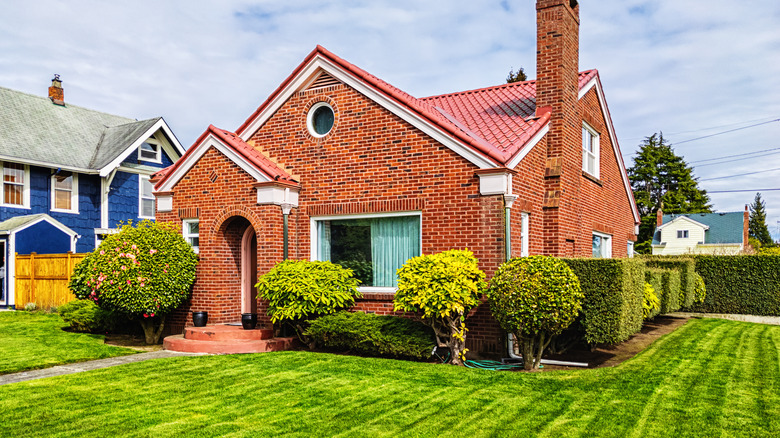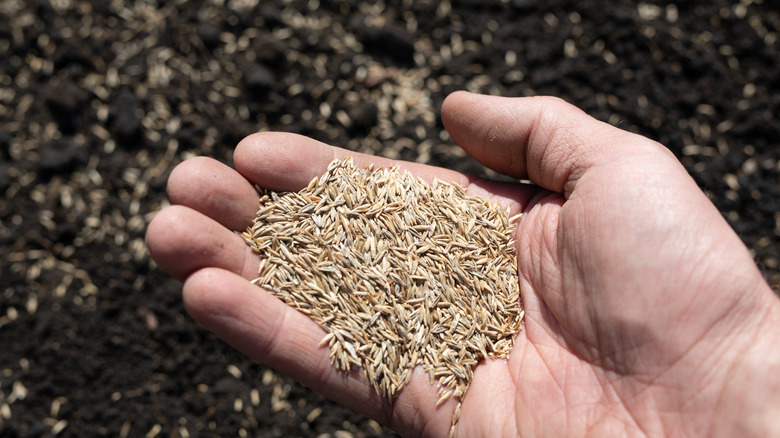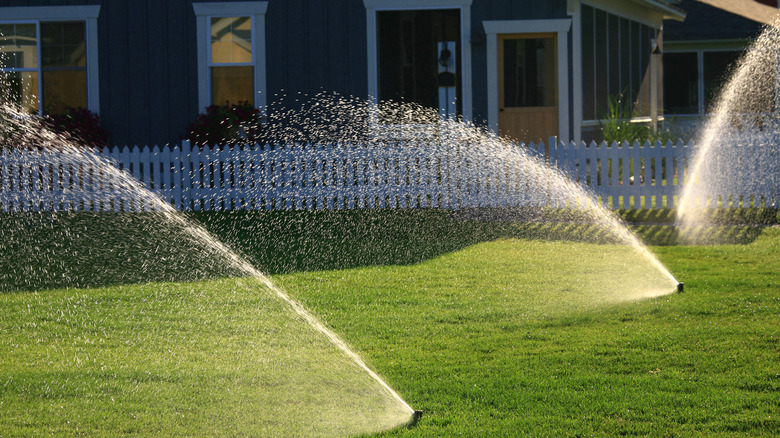Types Of Grass You Shouldn't Plant And Grow In The Summer
While a lush lawn may be a major part of your ideal summer yard, not every type of grass can easily provide that. Some grasses instead thrive during the cooler months and largely stop growing during hot summer months, often even turning brown. This doesn't mean the grass is dead though, it is likely just dormant and should recover once temperatures cool off. If your lawn does need new grass seed, the planting time will depend on where you live. The best time to plant and establish cool-season grasses like Kentucky bluegrass, many fescues, and ryegrass, is generally in late summer or early fall, once temperatures have come down.
The grass you choose to plant will depend on your region and climate. Kentucky bluegrass, one of the most popular cool-season grasses, is hardy in USDA zones 3 through 7, while the warm-season zoysia grass is only hardy in zones 5 through 11. Most cool-season grasses grow best in northern parts of the United States or the transition zone between the northern and southern parts of the country. Choosing grass that is compatible with your region is essential to growing a healthy and long-lived lawn.
When and how to plant cool-season grasses
If you live in an area where cool-season grasses can thrive, the best time to plant them is generally in September or early October, as air temperatures have cooled but the soil should still be warm. This gives your new grass plenty of time to get established before the next summer's heat. Additionally, there are generally other food sources for birds and small mammals in the fall, so they're more likely to leave your grass seeds alone during this time.
Before planting your cool season grass in the fall, make sure you have good quality topsoil in your yard and check the health of your soil to ensure it can support healthy grass. If necessary, you can add amendments to improve the fertility or pH, as many cool-season grasses grow best in soil with a pH between 6.0 to 7.2. After the soil is prepared and a starter fertilizer has been added, you can sow your grass seeds and gently mulch them with straw to help protect them and keep them moist. Don't let the soil dry out and avoid walking on or mowing your new lawn for at least a month to give it the best chance for success.
Summer lawn care for cool-season grasses
If your lawn of cool-season grass is looking patchy and brown during summer, you have a few options for improving it while you wait for cooler weather. Regular watering is a must for keeping cool-season grasses looking their best once temperatures heat up, so make sure your lawn is receiving around an inch of water per week, either through irrigation or through rainfall. You may also want to adjust the blade height on your lawn mower and allow the grass to stay at a height of around 3 to 4 inches during the summer months. Allowing the grass to grow taller encourages it to also grow deeper roots, which are beneficial for finding water and outcompeting weeds.
Another way to improve the look of your cool-season lawn during the summer months is to consider growing a mixed lawn. These lawns are mixes of different grasses or low-growing plants and often include some that thrive during warm seasons and others that grow better during cooler months. Fast-growing plants like clover can quickly fill in patchy spots, keeping your lawn lush and green, while also improving your soil health and plant diversity.


